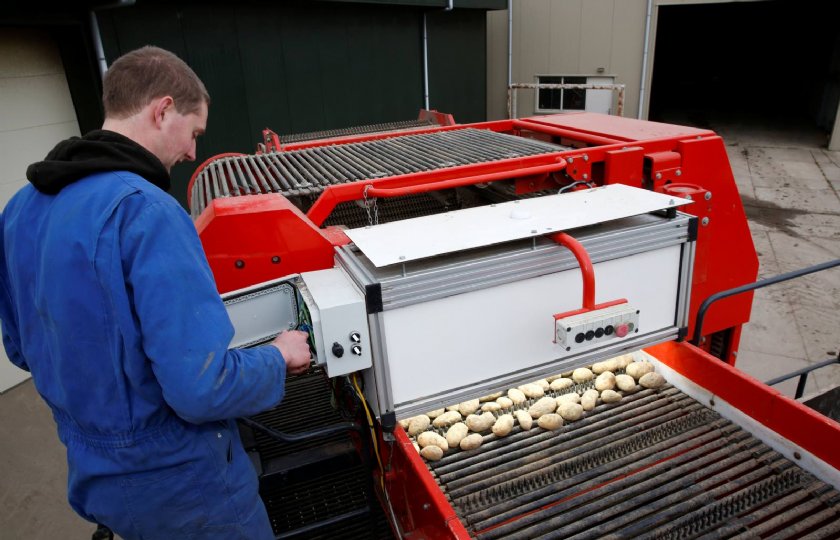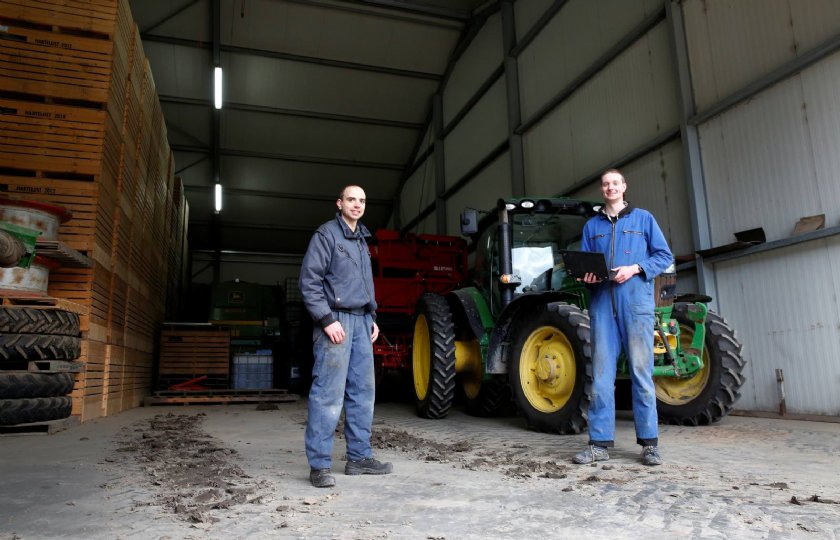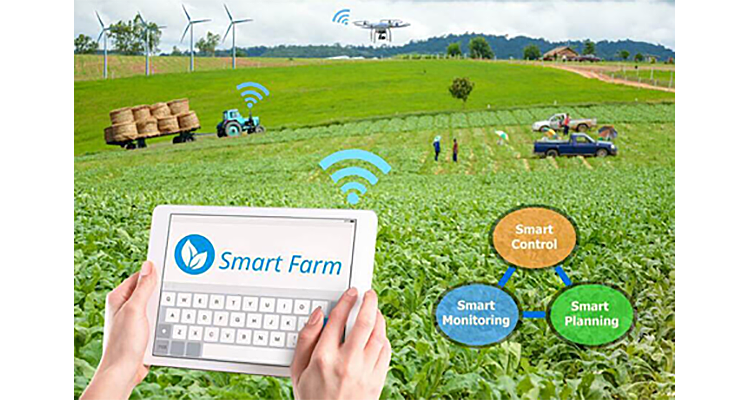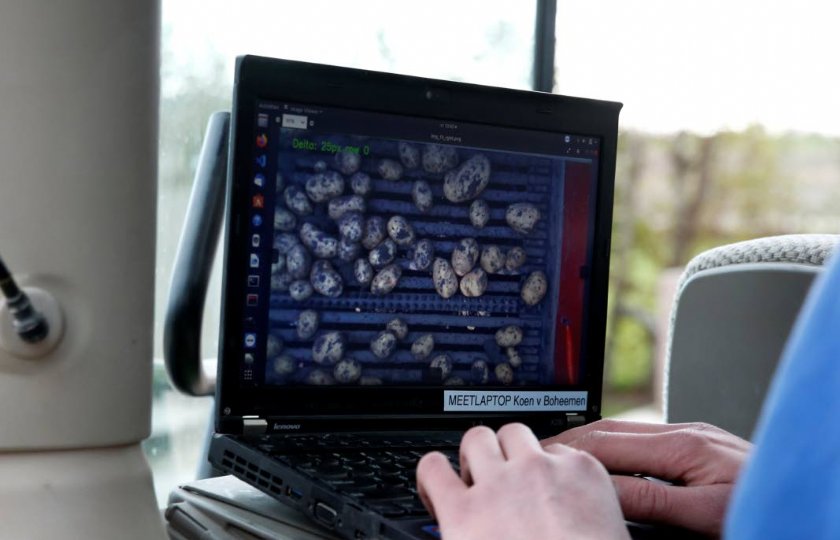‘I mainly see opportunities for yield measurement in seed potato cultivation’, says arable farmer Henk Geerligs from Anna Paulowna in North Holland. ‘One more tuber per meter of potato ridge can yield 250 euros extra per hectare. With 40 to 50 hectares of seed potatoes, that means 10,000 euros on an annual basis.’

n most crops, every extra kilo yields more. In seed potatoes, the number of tubers in the correct size classes largely determines the return that the entrepreneur achieves. ‘If there are more tubers underneath, the crop has to grow longer to get these potatoes in the right size,’ says grower Henk Geerligs from Anna Pavlovna in North Holland. Geerligs was a participant in the POP3 project ‘ Precision technological development in seed potatoes ‘. The aim was to arrive at a system for determining the yield that can also measure the tuber number and the size distribution.
On intuition
‘I make a lot of cultivation decisions, but I mainly do so by instinct without knowing what exactly is happening. By measuring site-specific yields, I hope to gain more insight into what is happening on the land.’
- “A 3D camera registers the size and the GPS system knows where the potatoes come from” KOEN VAN BOHEEMEN, RESEARCHER PRECISION AGRICULTURE AND ROBOTICS AT WAGENINGEN UNIVERSITY & RESEARCH
In the project, the arable farmer, together with researchers from Wageningen University & Research (WUR), developed a prototype for a yield measurement system that detects every tuber above the reading belt of the potato harvester. ‘A 3D camera registers the size and the GPS system knows where the potatoes come from’, explains WUR precision agriculture and robotics researcher Koen van Boheemen.
Intervene more or less
Geerligs’ son Kees, who is also involved in the project, sees potential in the method. ‘This allows you to see exactly where on a plot you are harvesting more or fewer potatoes. Previously we only knew the total yield.’ Henk Geerligs adds: ‘It is mainly about building up knowledge. Precision agriculture is needed to collect that knowledge.’
According to Van Boheemen, the camera measures accurately. It has a recognition algorithm based on deep learning. ‘If the tubers don’t overlap too much and are relatively clean, measuring goes well, but there is a limit. This method gives growers a complete picture’, he says.
Icing on the cake
‘Gps can already keep track of planting, spraying and fertilising, among other things. The yield measurement system is the icing on the cake’, the researcher smiles.
Recordings made during harvesting are not analyzed at the same time. ‘That is a conscious choice. For that you need a fast computer on the tractor. It needs a lot of power and is vulnerable. You can’t do anything with the data during harvesting either’, explains Van Boheemen.
Images shown in cabin
Kees Geerligs: ‘The images are now shown in the cabin. The advantage is that you can see how the harvesting goes live. This allows you to better determine what the optimum settings of the harvester are.’
The project group is busy processing the harvest images of Geerligs. ‘We want to optimize reliability to ensure, for example, that each potato is only counted once,’ says Van Boheemen. ‘After that we let the computer work with the collected data. Results will follow in mid-February, but the intention is that we will be able to see the outcome sooner.’
bunker harvesters
According to the researcher, the camera is especially suitable for bunker harvesters. ‘With a wagon harvester there is usually no good time when the potatoes are clean, still and spread out, so that the camera can shoot properly. When they are clean, the tubers are already in the drain, where measuring is more difficult.’ Van Boheemen does expect to see a difference in effectiveness on different bunker harvesters. ‘Some types pile the tubers in a heap in the middle of the reading belt. That also complicates measuring’, he explains.
‘Nevertheless, it is an interesting challenge. We want a system that is as independent as possible. You can also see that with GPS. If the signal drops for a while, you stop with more and more operations. Harvesting must always be possible, even when the camera fails. Then you miss data, but that should not be at the expense of harvesting.’

Sequel still unclear: The POP3 project ‘ Precision technological development in seed potatoes ‘ has been officially completed after three years. Arable farmers Henk Geerligs and Leendert Koolen have tackled the project together with Amsterdam Green Campus and the University of Amsterdam. Greenport Noord-Holland Noord acts as a communication partner. Under the POP3 scheme, the province of Noord-Holland provided the subsidy and Wageningen University & Research (WUR) took care of the technical development. It is still unclear what follow-up the project will have. ‘In any case, we want to prevent a report that disappears on the shelf’, emphasizes WUR researcher Koen van Boheemen.

